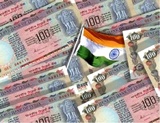 Stronger-than-expected GDP growth should not alter India's road map for an exit strategy, says Rajeev Malik.
Stronger-than-expected GDP growth should not alter India's road map for an exit strategy, says Rajeev Malik.
The emerging growth-inflation trade-off is an important input in deciding the pace, nature and timing of exit strategies in each country. On the growth front, the level of growth and its quality are important inputs that will affect the design of exit strategy, as will the sustainability of the anticipated recovery. Growth could be sustainable, but at a low level, which might make the combination unwelcome. Conversely, the growth level could be elevated but unsustainable, in which case the combination would also be unacceptable.
Different countries have different pressure points when it comes to deciding the future course of action: The US needs a weak/weaker dollar but cannot openly say so, while Australia has already hiked its policy rate three times in as many months. Japan has made a whimper of an attempt to deal with deflation, while Russia has chosen to cut interest rates. To top it all, Vietnam has devalued its currency. What is in store for India?
The key challenge for the exit strategy in India is that the recovery is still fragile but inflation is heading higher, although so far factors largely from the supply side affecting food prices. At the same time, money market liquidity is in excess and there are some concerns about asset inflation, but credit expansion has not picked up. Also, capital inflows will pick up, and the government will have to cut the fiscal deficit from next year. Policy-makers need to be doubly sure that growth will accelerate in the next financial year despite the withdrawal of monetary and fiscal life-support measures. Thus, the exit should be gentle and in baby steps.
The humbling, above-expectation GDP growth of 7.9 per cent year-on-year for the July-September quarter raises some interesting questions for Indian policy-makers. What caused the upside surprise? Is the elevated growth momentum sustainable, especially if the policy support is withdrawn? How will the GDP outcome affect the sequencing and timing of the exit strategy?
The industry's performance should not have been a surprise as the monthly industrial production data gave a pretty good insight into that. The big swing came from: Agriculture, as it posted meagre growth versus a widely expected decline; and the services sector, which was partly boosted by the Pay Commission's payout. The bottom line is the non-agriculture details are positive and encouraging but less impressive than the headline-grabbing GDP growth.
GDP growth will probably slip to the 5-6 per cent range for the December quarter because of a significant decline in agriculture, before rebounding again in the March quarter. Depending on the hit to agriculture, GDP growth for the full- year 2009-10 will probably be in the 6.5-7.0 per cent range. As I see it, growth will probably be around 8.0 per cent next year.
Analysts can be forgiven at times for their misguided and myopic enthusiasm, as reflected in some of the media comments on the improvement in domestic demand driven by private consumption and investment. Hang on a second: Wasn't that precisely what the aggressive and unprecedented loosening, including the government's fiscal gamble that was heavily criticised, meant to achieve? It is important for policy-makers not to overlook the fact that the bulk of improvement owes to a monetary-fiscal policy mix that is unsustainable.
What should be the sequencing of the exit strategy? I would reiterate that policy-makers should first work on exiting conventional monetary measures and then move to the fiscal exit. Most likely, the fiscal exit will be addressed in the Budget in February 2010. The key emphasise of the budget will be on fiscal consolidation, and my sense is that investors will be pleasantly surprised.
The Reserve Bank of India has already started implementing its exit strategy from October onwards, by the removal of some of the unconventional measures that it had announced. The debate over the monetary exit is essentially about what should come first: A policy-induced liquidity tightening or a policy rate hike? My view remains that working on liquidity management should precede a policy rate hike in the sequencing of the monetary exit. And unless RBI wants to spring a surprise via a cash reserve ratio hike outside of scheduled policy, it is most likely to announce a CRR hike in the January review.
The first policy rate change is likely to come in April 2010 when RBI announces the policy for 2010-11. Cumulatively, rates could be raised by 100 basis points over the course of the fiscal year in what will likely be a gentle pace of normalising policy. By April, RBI would have announced some of its liquidity measures to signal a change in the policy stance, and there would also be more convincing signs of a sustained economic upturn. Also, the Budget would have been announced in February, and it would have better clarity on government borrowing.
The CRR hike, in turn, should be preceded by RBI stopping open market operations (OMOs) to buy government bonds. It does not make sense for the central bank to buy bonds via OMOs (thereby injecting liquidity) while hiking the CRR (to suck out liquidity). The RBI has not done any OMOs since end-September, and this is likely to continue. Finally, the use of CRR and market stabilisation scheme (MSS) will also be a function of the strength of foreign capital inflows and the degree of policy-makers' discomfort with the pace of rupee appreciation.
The performance of the local bond market will dictate if there is any detour from the road map outlined above. The current year was about aggressive monetary easing, and RBI's OMOs meaningfully offset the pressure on government bonds from a surge in issuance as the fiscal deficit jumped. Next year, the roles will have to be reversed. On the positive side, correction to the fear of currently priced-in aggressive monetary tightening and the current lack of appreciation for potential fiscal improvement could be bond-friendly. On the negative side, gross government borrowing will still be pretty large despite the shrinkage in net borrowing.
One important difference in the current cycle compared to the previous tightening cycle is that the RBI was then trying to decelerate the torrid pace of credit expansion; however, that is not the case so far. Actually, credit growth remains anemic and economic activity is still supported by policy umbilical cords, including government spending. It is better for RBI to work on gently shrinking the excess liquidity than to hike policy rates anytime soon. That will give the appropriate signal to financial markets, especially with inflation concerns, but without hurting the ongoing improvement in growth.
The RBI Governor D Subbarao and his team deserve kudos for the exceptional navigation during an unprecedented crisis in which there was a high possibility of missteps. Unlike politicians, central banks do not get into chest-thumping mode, and their job is never over. It is best for RBI to adopt a handle-with-care exit strategy.
The author is head of India and Asean economics at Macquarie Capital Securities, Singapore. Views expressed are personal.





